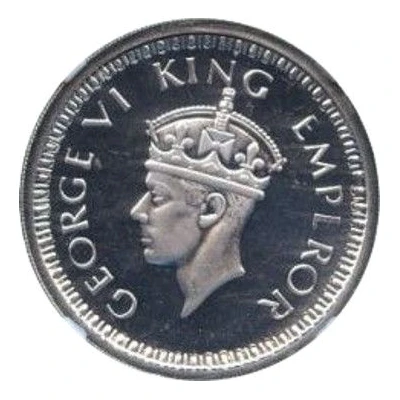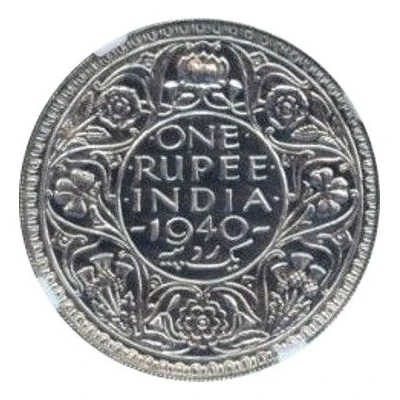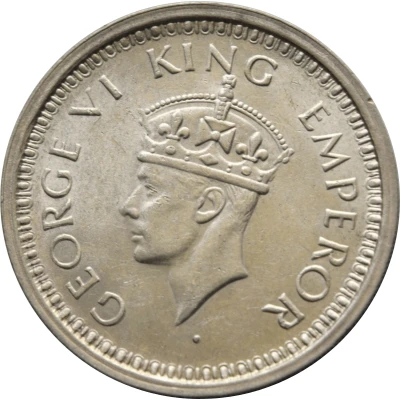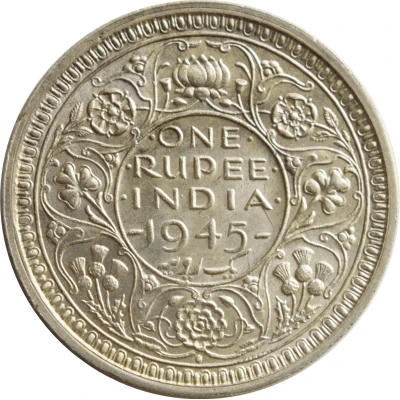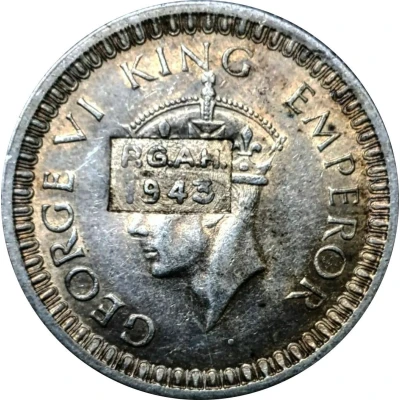
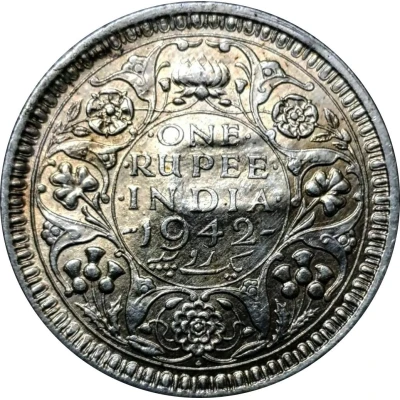

© Prashant Sinha
1 Rupee - George VI 1942 Embossed PGAH 1943 ND
1942 year| Silver (.500) | 11.66 g | 30.5 mm |
| Issuer | India - British (British India) |
|---|---|
| King | George VI (1936-1952) |
| Type | Standard circulation coin |
| Year | 1942 |
| Value | 1 Rupee |
| Currency | Rupee (1770-1947) |
| Composition | Silver (.500) |
| Weight | 11.66 g |
| Diameter | 30.5 mm |
| Shape | Round |
| Demonetized | Yes |
| Updated | 2024-10-05 |
| Numista | N#320033 |
|---|---|
| Rarity index | 91% |
Reverse
Within the circle, date divides legend in English & Urdu (Yek Rupya) . Outside circle, a wreath made of roses, thistle, shamrock leaves and lotus flowers. All within a toothed border.
Lettering:
ONE
RUPEE
INDIA
1942
یک روپیہ
Translation:
One
Rupee
India
1942
One Rupee
Engraver: Percy Metcalfe
Edge
Security edge
Comment
Provisional Government of Azad Hind. King George VI. Half Silver. 1 Rupee. 1942/43Netaji Subhas Chandra Bose had declared the formation of Provisional Government of Free India (Azad Hind) at Singapore 78 years ago (1943). The Provisional Government proclaimed authority over Indian civilian and military personnel in southeast Asian British colonial territory and the prospective authority over Indian territory which would fall to the combined Japanese and Indian National Army forces during the thrust towards India.
The government of Azad Hind had plans for its own currency, postage stamps, courts and a civil code. In the eyes of some Indians, its existence gave a greater importance to the independence struggle against the British.
While no currency was printed by PGAH, the existence of a few coins was reported in the late 1940s. Among the coins issued by the Provisional Government, the British India 1 rupee (silver) coins had the words ‘PGAH 1943’ embossed on the head of George VI. This killer cancellation was stamped right on the Royal face. Very few of these coins exist, as most were melted for the silver and many had the embossing worn off.
Interesting fact
One interesting fact about this coin is that it was minted during World War II, specifically in 1942, and was part of a special issue of coins that were produced during this time period. The coin features an embossed "PGAH 1943" on the obverse side, which stands for "Penny George Arthur Hadow," who was the Deputy Master of the Royal Mint in Bombay at the time. This coin is a rare and unique piece of history that serves as a reminder of India's rich numismatic heritage.
